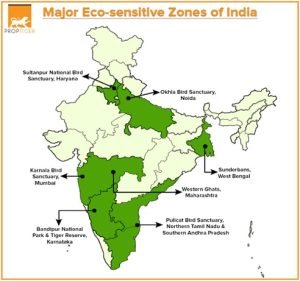Prelims – 28th Oct 23
UNSC Reforms
Present structure of UNSC
- It is one of the 6 principal organs of United Nations. Its primary job is to ensure international peace and security as well as recommending admission of new UN members to the General Assembly. It also approved any changes to the UN charter.
- The Security Council consists of fifteen members, of which five are permanent: China, France, Russia, the United Kingdom, and the United States. Ten members are elected for 2-year term by General Assembly. Its presidency rotates monthly among its members.
- The five permanent members have veto power with them. Any member, therefore, can block adoption of a resolution. This is one of the major issues that is affecting the credibility of UNSC.
- The UN’s role in international collective security is defined by the UN Charter, which authorizes the Security Council to investigate any situation threatening international peace; recommend procedures for peaceful resolution of a dispute etc.
Reforms India is seeking
- Categories of membership: The structure of the UNSC whereby there 5 permanent (P-5) members is plagued with various issues. There is mutual rivalry among the members and this leads to policy paralysis. Ex- China and Russia Vs other countries.
- Question of veto: The veto system is reflection of post WW II world order, it doesnot reflect the present reality. This elite membership is not conducive to the current global security needs. Ex- Out of 24 vetoes over the last 20 years, 15 have been used by the United States to protect Israel.
- Regional Representation: There is clear under-representation of regions like Africa, Asia and Latin America while there is over representation of Europe. Ex- Whole of Africa does not have a single member in P-5.
- Absence of important countries: There are countries that are more deserving to be member of UNSC. However, it lacks the membership of countries like India, Brazil, Germany etc.
- Working of UNSC: UNSC has been functioning in the most non-transparent and non-consultative way. The undemocratic nature of UNSC within the supposedly democratic UN has compromised the overall credibility of the United Nations.
Ecologically Sensitive Zones
As per the National Wildlife Action Plan (2002-2016), of the Ministry of Environment, Forest and Climate Change, land within 10 km of the boundaries of national parks and wildlife sanctuaries is to be notified as eco-fragile zones or Eco-Sensitive Zones (ESZ).
While the 10-km rule is implemented as a general principle, the extent of its application can vary. Areas beyond 10-km can also be notified by the Union government as ESZs, if they hold larger ecologically important “sensitive corridors.”
Importance of Eco-Sensitive Zones (ESZs):
- ESZs would minimize the impact of urbanisation and other developmental activities.
- The Eco-sensitive zones around protected areas, wildlife sanctuaries and national parks create some kind of ‘Shock Absorber’.
- ESZs help in in-situ conservation, which deals with the conservation of an endangered species in its natural habitat.
- Eco-Sensitive Zones minimize forest depletion and man-animal conflict.

Stockholm International Peace Research Institute (SIPRI) Report
- USA has the largest number of deployed nuclear warheads followed by Russia, France and UK while Russia has the highest total inventory of nuclear warheads followed by USA and China.
- India, China, Pakistan, North Korea and Israel have no deployed nuclear warheads.
- India has a total of 164 nuclear warhead stockpiles.
- Overall, number of nuclear warheads continues to decline, primarily due to USA and Russia dismantling retired warheads.
- With China modernizing and expanding its nuclear arsenal, India and Pakistan also appear to be increasing the size of their nuclear weapon inventories. o Raw material for nuclear weapons is either Highly Enriched Uranium (HEU) or separated Plutonium. India has produced mainly plutonium.
